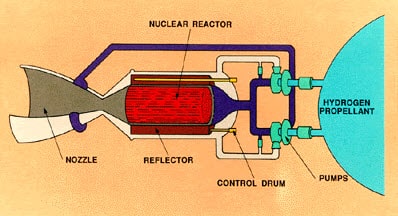SpaceX is reportedly going public in 2026 at a $1.5 trillion valuation.
— Anthony Pompliano 🌪 (@APompliano) December 9, 2025
Seems too low in my opinion.
One of the most important and valuable companies in the world.
Will eventually be $10 trillion.
The Global Space Tech Revolution: Startups, Rivalries, and the Race to the Stars https://t.co/c5YIvNDoaB
— Paramendra Kumar Bhagat (@paramendra) December 10, 2025
The Global Space Tech Revolution: Startups, Rivalries, and the Race to the Stars
How a new era of private innovation, geopolitical rivalry, and technological upheaval is reshaping humanity’s next great frontier.
In 2025, the space technology sector feels less like an industry and more like a global awakening. The cost of reaching orbit has plummeted, reusable rockets have become routine, and the commercialization of space—once dismissed as science fiction—is accelerating with the momentum of a solar flare. What was once the realm of superpower agencies like NASA, Roscosmos, and CNSA is now a bustling marketplace where startups test engines in dusty deserts, manufacture pharmaceuticals in microgravity, and compete to build the backbone of tomorrow’s orbital economy.
This article surveys the world’s most promising space tech startups, maps the new geopolitical chessboard, debunks myths around SpaceX’s workforce, and identifies the five companies most likely to challenge Elon Musk’s orbital empire.
I. The New Space Economy: Startups Across the World
The modern space ecosystem spans every continent and every layer of activity—from satellite manufacturing to in-space manufacturing, from propulsion to orbital logistics. While the U.S. remains the gravitational center, Europe, Asia, and emerging markets are rapidly building their own launchpads to the future.
United States: The Epicenter of Private-Sector Space Innovation
American startups dominate in both funding and technological breadth:
-
Anduril Industries – Defense-driven space technologies, autonomous systems, and orbital surveillance.
-
Apex – Modular spacecraft mass-manufactured like cars, not bespoke science projects.
-
Varda Space – In-space pharmaceutical and materials manufacturing using microgravity to create drugs impossible on Earth.
-
Astranis – Affordable geostationary satellites that bring broadband to underserved regions.
-
Hadrian – Automated machine shops building precision components for rockets and satellites at scale.
-
Air Space Intelligence – AI-led space traffic management.
-
Skydio – Autonomous drones increasingly integrated into orbital and defense ecosystems.
Y Combinator alone has funded 50+ aviation and space startups, underscoring the depth of U.S. entrepreneurial energy.
Europe: Precision Engineering Meets Space Ambition
Europe’s ecosystem is smaller but highly specialized:
-
SeaCras – A top EU spacetech startup for 2025, focusing on Earth observation analytics.
-
Greenerwave – Beamforming and smart antenna technologies that improve satcom efficiency.
European ventures excel in niche, deep-tech segments—key ingredients in the global supply chain.
Asia: India Leads, Japan Innovates, China Accelerates
India: The Breakout Star
India’s space ecosystem is exploding—over 300 space startups now operate across:
-
InspeCity – Orbital robotics and autonomous inspection drones.
-
Galactiv – Orbital servicing systems.
-
Pan Galactic – Next-gen propulsion.
-
Blue Orbit Space – Mission control and operations.
-
Salutes – Space tourism support technologies.
India’s rise is fueled by:
-
Government reforms
-
A booming private sector
-
A strategic goal of reaching a $45 billion space economy by 2047
Japan and Australia
-
ElevationSpace (Japan) – Orbital habitats and return modules.
-
Jua – Solar sail technology.
-
Australia continues scaling smallsat and launch capabilities.
China
China’s commercial sector grows in lockstep with state ambitions—lunar infrastructure, deep-space probes, human landing targets by 2030. Private players plug into Beijing’s lunar megaprojects.
The Smallsat Boom: A Global Gold Rush
Across the world, smallsat startups are proliferating. Among the top global players:
-
ASCENDARC – Advanced propulsion.
-
ELEVATIONSPACE – Orbital habitat modules.
-
GREENERWAVE – Beamforming.
-
HUBBLE NETWORK – Direct-to-device IoT satellites.
-
INSPECITY – Inspection drones.
-
JUA – Solar sails.
-
PILOGIC – Logistics platforms.
-
PORTAL SPACE SYSTEMS – Modular satellites for rapid deployment.
Funding trends show 60% of global investment remains U.S.-based, but Asia—especially India—is closing the gap fast.
II. The Most Promising Space Tech Startups of 2025
Promise in space is defined by four things:
-
Breakthrough technology
-
Commercial traction
-
Scalable manufacturing
-
Strategic partnerships or government alignment
Several startups stand out:
-
Rocket Lab – The Neutron rocket positions it as the first serious competitor to the Falcon 9 in reusability and medium-lift capacity.
-
Iceye – A synthetic aperture radar (SAR) pioneer offering real-time global imaging.
-
Intuitive Machines – A leader in lunar landers and surface exploration; already part of NASA’s Artemis program.
-
Varda – Successfully proving microgravity manufacturing for biotech and semiconductors.
-
Astranis – Reinventing geostationary satellites with smaller, cheaper, faster-delivered units.
In India, the private sector’s momentum is extraordinary. FDI inflows, ISRO partnerships, and global mission collaborations position India as the dark horse of commercial space.
Besxar Space Industries, with a 12-launch SpaceX deal, represents the new class of scalable orbital manufacturers.
III. The Geopolitical Space Race: U.S. vs China—With India as the Swing Power
The space race of 2025 mirrors the AI race—but with richer symbolism and higher stakes.
China’s Grand Strategy
China aims to surpass U.S. space leadership by 2045, driven by:
-
Lunar base infrastructure
-
Human landing goals by 2030
-
Rapid satellite deployment
-
Co-leadership of global alliances
China’s political leadership sees space as:
-
A military domain
-
A scientific domain
-
A national prestige domain
The U.S. Perspective
American lawmakers increasingly warn of a “modern space race,” passing legislation like the LAUNCH Act to counter potential militarization of orbit.
India: The Balancing Force
Unlike AI—where power is concentrated in two blocs—the space economy is multipolar.
India stands at the crossroads:
-
A trusted U.S. partner
-
A leader of the Global South
-
A nation with independent lunar ambitions
With missions like Chandrayaan, Gaganyaan, and new commercial launch contracts, India is shaping the next planetary order rather than reacting to it.
IV. Debunking the Myth: Does SpaceX “Run on ISRO Talent”?
A recurring social media claim suggests that SpaceX “runs on Indian ISRO engineers.”
The truth is more nuanced—and far less dramatic.
What’s true
-
SpaceX employs Indian-origin engineers, such as Sanjeev Sharma, an IIT Roorkee alumnus.
-
India produces one of the world’s strongest engineering talent pools.
-
ISRO alumni are globally respected and occasionally join international teams.
What’s false
-
There is no evidence that SpaceX relies heavily on former ISRO personnel.
-
SpaceX’s breakthroughs—Merlin engines, Raptor engines, Starship architecture, reusability—are products of its own internal engineering culture.
As former ISRO Chairman S. Somanath noted, many Indian engineers are returning home to work in India's space boom rather than leaving for U.S. companies.
SpaceX’s workforce is global, but its core innovation engine is distinctly its own.
V. Five Startups Most Likely to Challenge SpaceX
SpaceX controls 83–90% of global orbital payload as of 2025—a near-monopoly built on reusability, scale, and relentless iteration.
But five companies could challenge parts of its empire:
1. Rocket Lab
-
Neutron rocket: reusable, medium-lift
-
Direct competitor to Falcon 9
-
First launch targeted for late 2025
2. Relativity Space
-
Terran R: Fully reusable heavy-lift rocket
-
Up to 20+ tons to orbit
-
3D-printed architecture enables rapid, modular iteration
3. Stoke Space
-
Fully reusable launch system
-
Revolutionary regeneratively cooled engine and heat shield design
-
Focus on extremely fast turnaround
4. Firefly Aerospace
-
Scaling from the Alpha rocket to medium-lift
-
Lunar lander (Blue Ghost) already part of NASA missions
-
Competitive for smallsat deployments
5. ABL Space Systems
-
RS1 rocket: flexible, mobile launch capability
-
Future reusability upgrades could disrupt the smallsat segment
Each of these companies is aligned with the only proven formula in modern launch economics:
Reusable hardware + fast manufacturing + diversified markets.
Conclusion: The Next Decade Belongs to the Bold
The space tech landscape of 2025 is not just dynamic—it is volcanic.
New startups emerge like sparks from a welder’s torch, governments recalibrate their strategies, and private companies rewrite the rules of orbital commerce.
SpaceX still towers over the field, but the frontier is widening.
The next great challengers are already sharpening their engines.
We are moving from the Age of Rockets to the Age of Space Infrastructure—a world of orbital factories, autonomous satellites, lunar supply chains, and eventually, interplanetary settlements.
The race to the stars is no longer a competition between nations.
It is a global, multipolar, entrepreneurial surge—one that could redefine humanity’s place in the cosmos.
The sky is no longer the limit.
It is the starting line.
वैश्विक स्पेस टेक क्रांति: स्टार्टअप्स, प्रतिद्वंद्विता और सितारों की दौड़
कैसे निजी नवाचार, भू-राजनीतिक प्रतिस्पर्धा और तकनीकी उथल-पुथल मानवता की अगली महान सीमा को नया आकार दे रही है
2025 में अंतरिक्ष प्रौद्योगिकी (Space Technology) क्षेत्र किसी साधारण उद्योग से अधिक—एक वैश्विक जागरण जैसा प्रतीत होता है। कक्षा (Orbit) तक पहुँचने की लागत ऐतिहासिक रूप से घट चुकी है, पुन: प्रयोज्य (Reusable) रॉकेट अब अपवाद नहीं बल्कि मानक बन चुके हैं, और अंतरिक्ष का व्यावसायीकरण—जिसे कभी विज्ञान-कथा माना जाता था—अब तीव्र गति से वास्तविकता में बदल रहा है।
जो क्षेत्र कभी केवल NASA, Roscosmos और CNSA जैसे सरकारी संस्थानों के अधीन था, वह अब एक जीवंत बाजार बन चुका है—जहाँ स्टार्टअप्स रेगिस्तानों में इंजन का परीक्षण कर रहे हैं, माइक्रोग्रैविटी में दवाइयाँ बना रहे हैं, और भविष्य की कक्षीय अर्थव्यवस्था (Orbital Economy) की नींव रख रहे हैं।
यह लेख दुनिया के सबसे आशाजनक स्पेस टेक स्टार्टअप्स का सर्वे करता है, नए भू-राजनीतिक शतरंज बोर्ड को समझता है, SpaceX के कार्यबल को लेकर फैली मिथकों को तोड़ता है, और उन पाँच कंपनियों की पहचान करता है जो एलन मस्क के अंतरिक्ष साम्राज्य को चुनौती दे सकती हैं।
I. नई स्पेस अर्थव्यवस्था: दुनिया भर के स्टार्टअप्स
आधुनिक स्पेस इकोसिस्टम हर महाद्वीप और हर स्तर पर फैला हुआ है—सैटेलाइट निर्माण से लेकर अंतरिक्ष-आधारित उत्पादन तक, प्रोपल्शन से लेकर ऑर्बिटल लॉजिस्टिक्स तक।
हालाँकि अमेरिका अब भी इस क्षेत्र का केंद्र है, लेकिन यूरोप, एशिया और उभरते बाजार तेजी से अपने स्वयं के “लॉन्चपैड” तैयार कर रहे हैं।
संयुक्त राज्य अमेरिका: निजी अंतरिक्ष नवाचार का केंद्र
अमेरिकी स्टार्टअप्स फंडिंग और तकनीकी विविधता दोनों में अग्रणी हैं:
-
Anduril Industries – रक्षा-केंद्रित स्पेस टेक और स्वायत्त प्रणालियाँ
-
Apex – मॉड्यूलर स्पेसक्राफ्ट, जिन्हें कारों की तरह बड़े पैमाने पर बनाया जा सकता है
-
Varda Space – माइक्रोग्रैविटी में फार्मास्यूटिकल और मटेरियल मैन्युफैक्चरिंग
-
Astranis – कम लागत वाले GEO सैटेलाइट, जो वंचित क्षेत्रों को ब्रॉडबैंड प्रदान करते हैं
-
Hadrian – रॉकेट और सैटेलाइट पार्ट्स के लिए स्वचालित फैक्ट्रियाँ
-
Air Space Intelligence – AI-आधारित स्पेस ट्रैफिक मैनेजमेंट
-
Skydio – स्वायत्त ड्रोन, जिनका उपयोग स्पेस और रक्षा प्रणालियों में हो रहा है
केवल Y Combinator ने ही 50 से अधिक एविएशन और स्पेस स्टार्टअप्स को फंड किया है—यह अमेरिकी उद्यमशीलता की गहराई को दर्शाता है।
यूरोप: सटीक इंजीनियरिंग और रणनीतिक विशेषज्ञता
यूरोप का स्पेस इकोसिस्टम आकार में छोटा है लेकिन तकनीकी रूप से अत्यंत विशिष्ट:
-
SeaCras – 2025 के शीर्ष यूरोपीय स्पेसटेक स्टार्टअप्स में से एक
-
Greenerwave – उन्नत बीमफॉर्मिंग और स्मार्ट एंटीना टेक्नोलॉजी
यूरोपीय कंपनियाँ वैश्विक सप्लाई चेन में महत्वपूर्ण “डीप-टेक” नोड्स पर ध्यान केंद्रित करती हैं।
एशिया: भारत आगे, जापान नवाचार में, चीन तीव्र गति से
भारत: उभरता हुआ सितारा
भारत का स्पेस स्टार्टअप इकोसिस्टम विस्फोटक गति से बढ़ रहा है। आज 300 से अधिक स्पेस स्टार्टअप्स सक्रिय हैं, जिनमें शामिल हैं:
-
InspeCity – ऑर्बिटल रोबोटिक्स और निरीक्षण ड्रोन
-
Galactiv – कक्षीय सेवाएँ
-
Pan Galactic – उन्नत प्रोपल्शन सिस्टम
-
Blue Orbit Space – मिशन कंट्रोल टेक्नोलॉजी
-
Salutes – स्पेस टूरिज्म सहायक तकनीक
भारत का लक्ष्य 2047 तक $45 बिलियन की स्पेस इकॉनमी बनाना है—सरकारी सुधार, निजी भागीदारी और ISRO-समर्थन इसका आधार हैं।
जापान और ऑस्ट्रेलिया
-
ElevationSpace (जापान) – ऑर्बिटल हैबिटैट और रिटर्न मॉड्यूल
-
Jua – सोलर सेल टेक्नोलॉजी
-
ऑस्ट्रेलिया स्मॉलसैट और लॉन्च इन्फ्रास्ट्रक्चर में तेजी से आगे बढ़ रहा है।
चीन
चीन का निजी क्षेत्र उसके सरकारी स्पेस लक्ष्यों के साथ कदम मिलाकर बढ़ रहा है—मानव चंद्र मिशन, सैटेलाइट समूह और गहन अंतरिक्ष योजनाएँ इसका हिस्सा हैं।
II. 2025 के सबसे आशाजनक स्पेस टेक स्टार्टअप्स
स्पेस टेक में “वादा” चार बातों से तय होता है:
-
तकनीकी सफलता
-
व्यावसायिक उपयोग
-
स्केलेबल निर्माण
-
रणनीतिक साझेदारियाँ
इनमें प्रमुख हैं:
-
Rocket Lab – Neutron रॉकेट Falcon 9 को सीधी चुनौती देता है
-
Iceye – SAR सैटेलाइट के जरिए रीयल-टाइम पृथ्वी अवलोकन
-
Intuitive Machines – चंद्र लैंडर और Artemis कार्यक्रम का हिस्सा
-
Varda – अंतरिक्ष-आधारित निर्माण को वास्तविकता बना रहा है
-
Astranis – कम लागत, तेज़ GEO सैटेलाइट समाधान
III. भू-राजनीतिक स्पेस रेस: अमेरिका बनाम चीन—और भारत
2025 की स्पेस रेस, AI रेस जैसी है—लेकिन अधिक प्रतीकात्मक और दीर्घकालिक।
चीन
-
2045 तक अमेरिका को पीछे छोड़ने का लक्ष्य
-
2030 तक मानव चंद्र लैंडिंग
-
सैन्य, आर्थिक और प्रतिष्ठात्मक रणनीति
अमेरिका
-
“Modern Space Race” की चेतावनी
-
LAUNCH Act जैसे कानून
-
निजी कंपनियों के साथ गहरा सहयोग
भारत: संतुलन शक्ति
AI के विपरीत, स्पेस एक मल्टी-पोलर गेम है।
भारत अमेरिका का सहयोगी भी है और ग्लोबल साउथ का नेता भी—साथ ही उसकी स्वतंत्र महत्वाकांक्षाएँ भी हैं।
IV. मिथक-भेदन: क्या SpaceX ISRO टैलेंट पर चलता है?
यह दावा कि “SpaceX ISRO इंजीनियरों पर निर्भर है” अतिशयोक्ति है।
सत्य
-
भारतीय मूल के इंजीनियर SpaceX में कार्यरत हैं
-
भारत का इंजीनियरिंग टैलेंट विश्व-स्तरीय है
असत्य
-
SpaceX की सफलता ISRO टैलेंट पर निर्भर नहीं
-
इसका मूल नवाचार इसकी अपनी आंतरिक संस्कृति से आता है
वास्तव में, कई भारतीय इंजीनियर अब भारत लौटकर भारतीय स्पेस स्टार्टअप्स में कार्य कर रहे हैं।
V. SpaceX को चुनौती देने वाले पाँच स्टार्टअप्स
2025 में SpaceX वैश्विक ऑर्बिटल पेलोड का 83–90% संभालता है।
फिर भी, ये पाँच खिलाड़ी उभर रहे हैं:
-
Rocket Lab – Falcon 9 का सीधा प्रतिद्वंदी
-
Relativity Space – 3D-प्रिंटेड, पूर्णतः पुन: प्रयोज्य रॉकेट
-
Stoke Space – तेज़ टर्नअराउंड वाला सिस्टम
-
Firefly Aerospace – लूनर मिशन और मीडियम-लिफ्ट
-
ABL Space Systems – कम लागत, लचीला लॉन्च मॉडल
निष्कर्ष: अगला दशक साहसी लोगों का है
2025 का स्पेस टेक परिदृश्य स्थिर नहीं—यह ज्वालामुखी की तरह फूट रहा है।
स्टार्टअप्स नई सीमाएँ खींच रहे हैं, राष्ट्र अपनी रणनीतियाँ बदल रहे हैं, और निजी कंपनियाँ ऑर्बिटल व्यापार के नियम लिख रही हैं।
SpaceX आज भी विशाल है—लेकिन क्षितिज चौड़ा हो रहा है।
हम रॉकेट युग से आगे बढ़कर स्पेस इंफ्रास्ट्रक्चर युग में प्रवेश कर चुके हैं—जहाँ ऑर्बिटल फैक्ट्रियाँ, चंद्र सप्लाई चेन और अंततः अंतरग्रहीय बस्तियाँ बनेंगी।
आकाश अब सीमा नहीं रहा।
वह तो केवल शुरुआती रेखा है।


)





